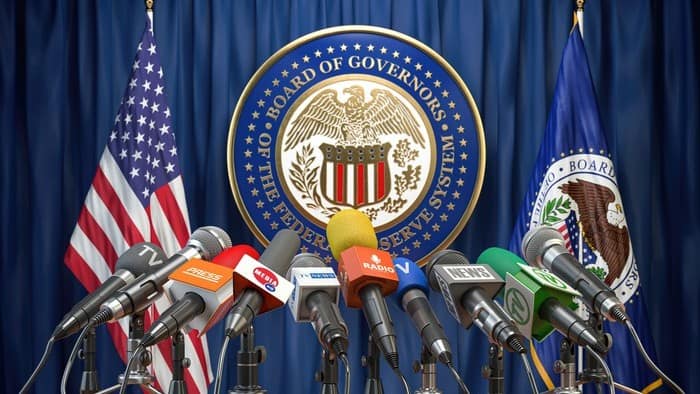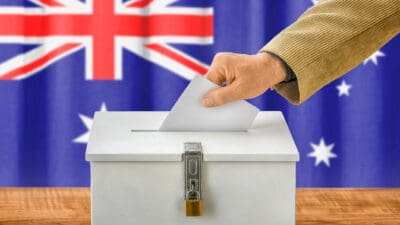S&P/ASX 200 Index (ASX: XJO) shares are taking a tumble today, down 0.6% in late morning trade, having earlier posted losses of 0.9%.
Unless there's a turnaround later in the day, this will mark the third straight day of losses for the benchmark index.
The ASX 200 first came under renewed pressure on Tuesday following another boost in interest rates from the RBA that caught the market by surprise.
Today's pressure also looks to come largely from higher interest rates. Only this time, we have the United States Federal Reserve to thank.
US Fed adds more pressure to the ASX 200
While most of us were sleeping in Australia, the Federal Open Market Committee (FOMC) opted to boost the official US interest rate by another 0.25%. That brings the Fed's target rate to a range of 5.00% to 5.25%. You'd need to head back to 2007 to find rates any higher in the US.
The ASX 200 looks to be following the lead of US markets, where all the major indexes tumbled more than 1% following the Fed's announcement.
On the plus side of this ledger, the Fed has eased back on its hawkish tone.
Where before the central bank had said it anticipated that some additional interest rate increases might be required, that was left out of the FOMC's statement yesterday.
A pause in the tightening cycle next month would offer some fresh tailwinds for US equities as well as ASX 200 shares.
"A decision on a pause was not made today," Fed chair Jerome Powell said before highlighting the dovish shift in language.
"That's a meaningful change that we're no longer saying that we anticipate" more rate increases, he said (quoted by Bloomberg).
Instead the FOMC "will closely monitor incoming information and assess the implications for monetary policy".
"So we'll be driven by incoming data, meeting by meeting, and we'll approach that question at the June meeting," Powell said.
As for a looming recession in the world's top economy that could further pressure US equities and the ASX 200?
"It's possible that we will have, what I hope, will be a mild recession," Powell said.
"The case of avoiding a recession is, in my view, more likely than that of having a recession. But the case of having a recession, I don't rule that out either."
What are the experts saying?
Many investors continue to price in likely rate cuts from the Fed later in 2023. While that would be welcomed by global share markets, including the ASX 200, most experts don't see that happening.
Here's what some of the top thinkers are saying (courtesy of The Australian Financial Review).
"Although we too think the Fed is likely done with further rate hikes, we think September is too early for cuts," TD Securities stated.
"Given the lagged effects of the Fed's past rate hikes and recent tightening in financial conditions, we think rate cuts are more likely to start at the very end of 2023 or early 2024."
According to Morgan Stanley:
With the range now at the Fed's projected peak of 5.00% to 5.25%, we expect it to remain on hold before making the first 25bp cut in March 2024. Like the Fed, we see the effects of banking stresses on the economy as highly uncertain and will hone our expectations for the economy and monetary policy as incoming data evolves.
And for ASX 200 investors still hoping to see the US Fed bring down rates this year, here's what Schwab's Liz Ann Sonders said:
The Fed is already suffering a credibility problem—a pivot to rate cuts with inflation still well above their target, and in the absence of significant deterioration in its other mandate (employment), would really damage what remains of their inflation-fighting cred.
With the ASX 200 now down 2.9% from Monday's intraday highs, I'd say most Aussie investors, retail and professional, have already priced in another year of high rates from both the RBA and the Fed.
In fact, now might be a great time to hunt for companies trading at bargain prices.









